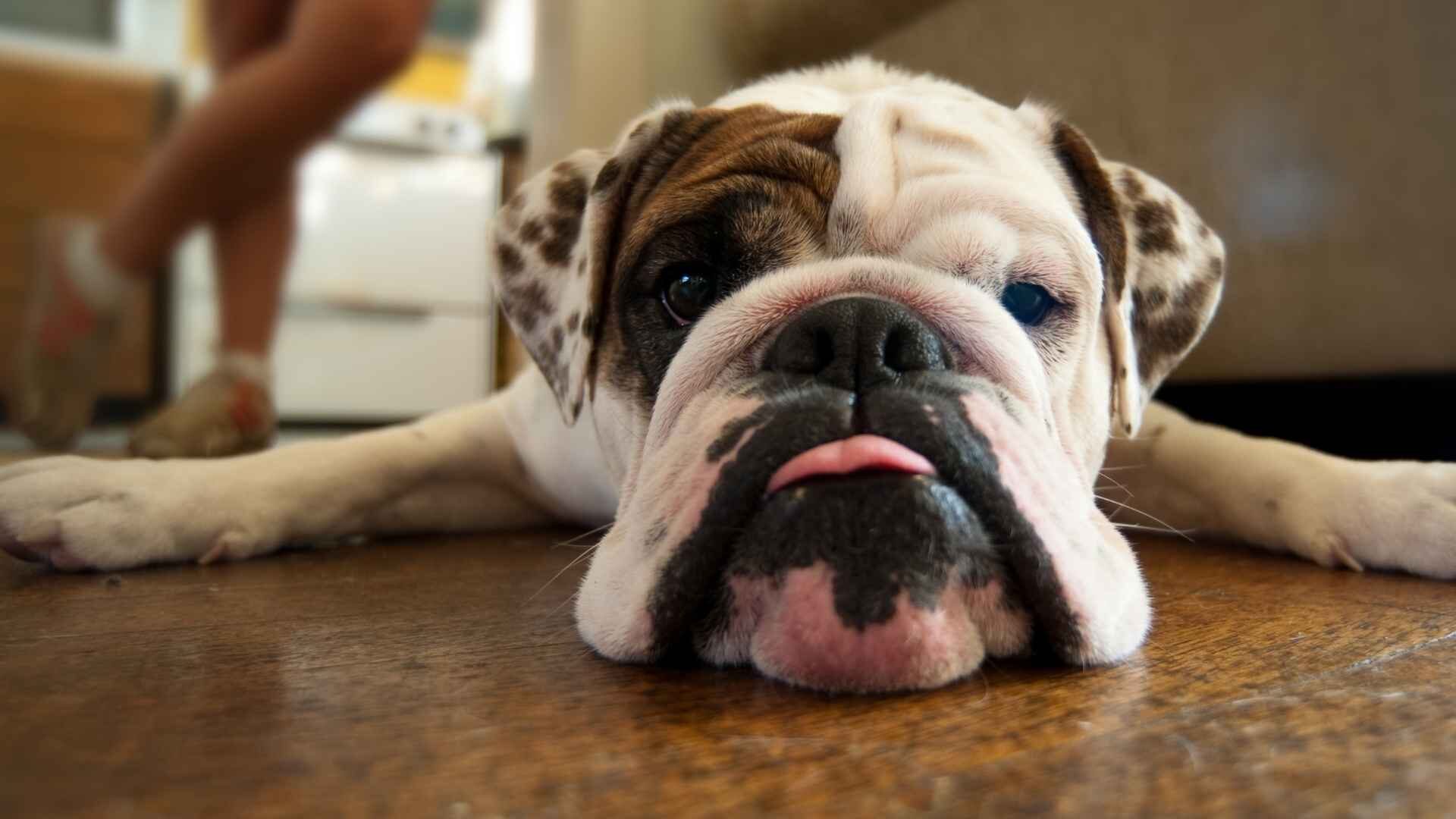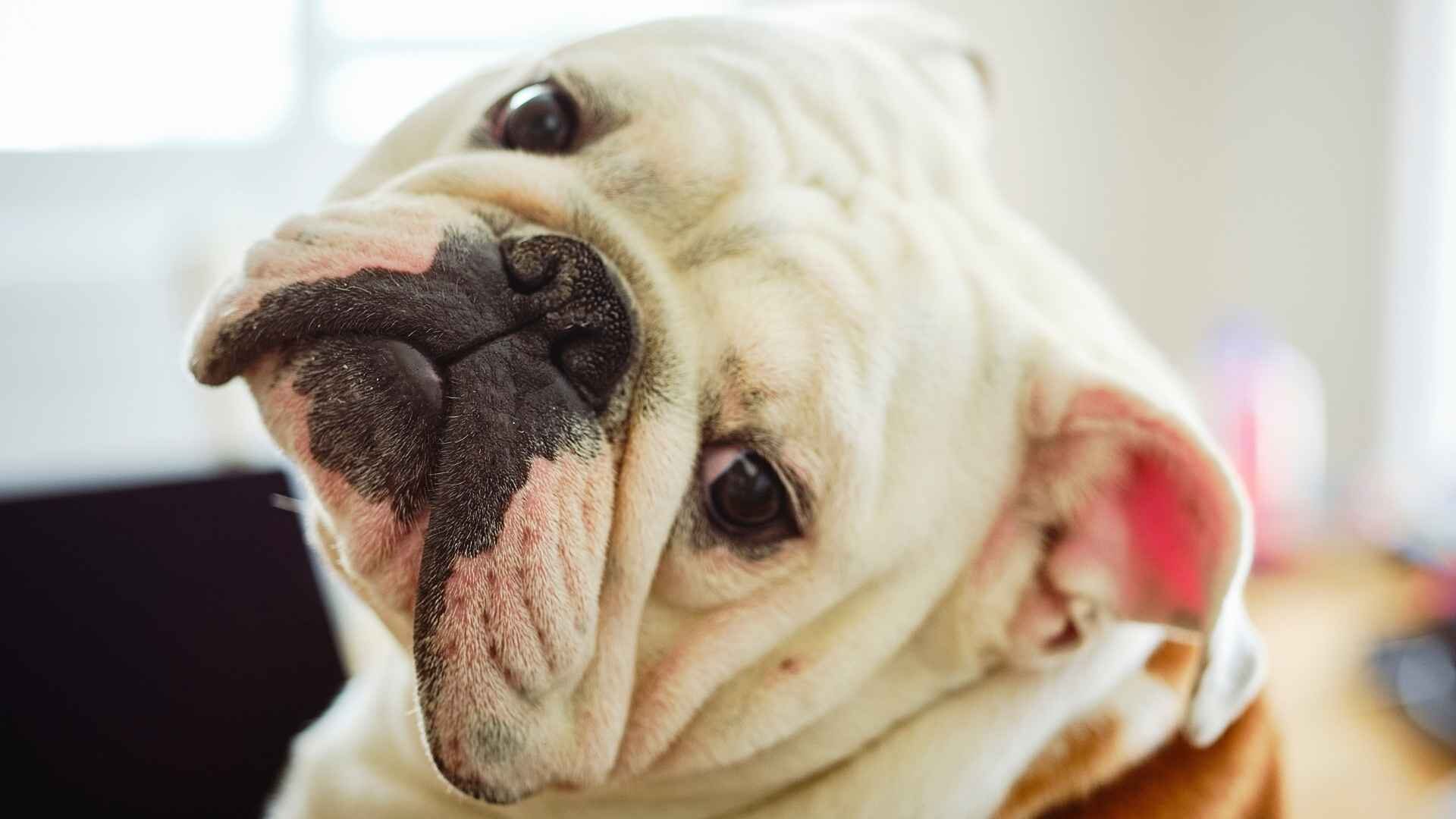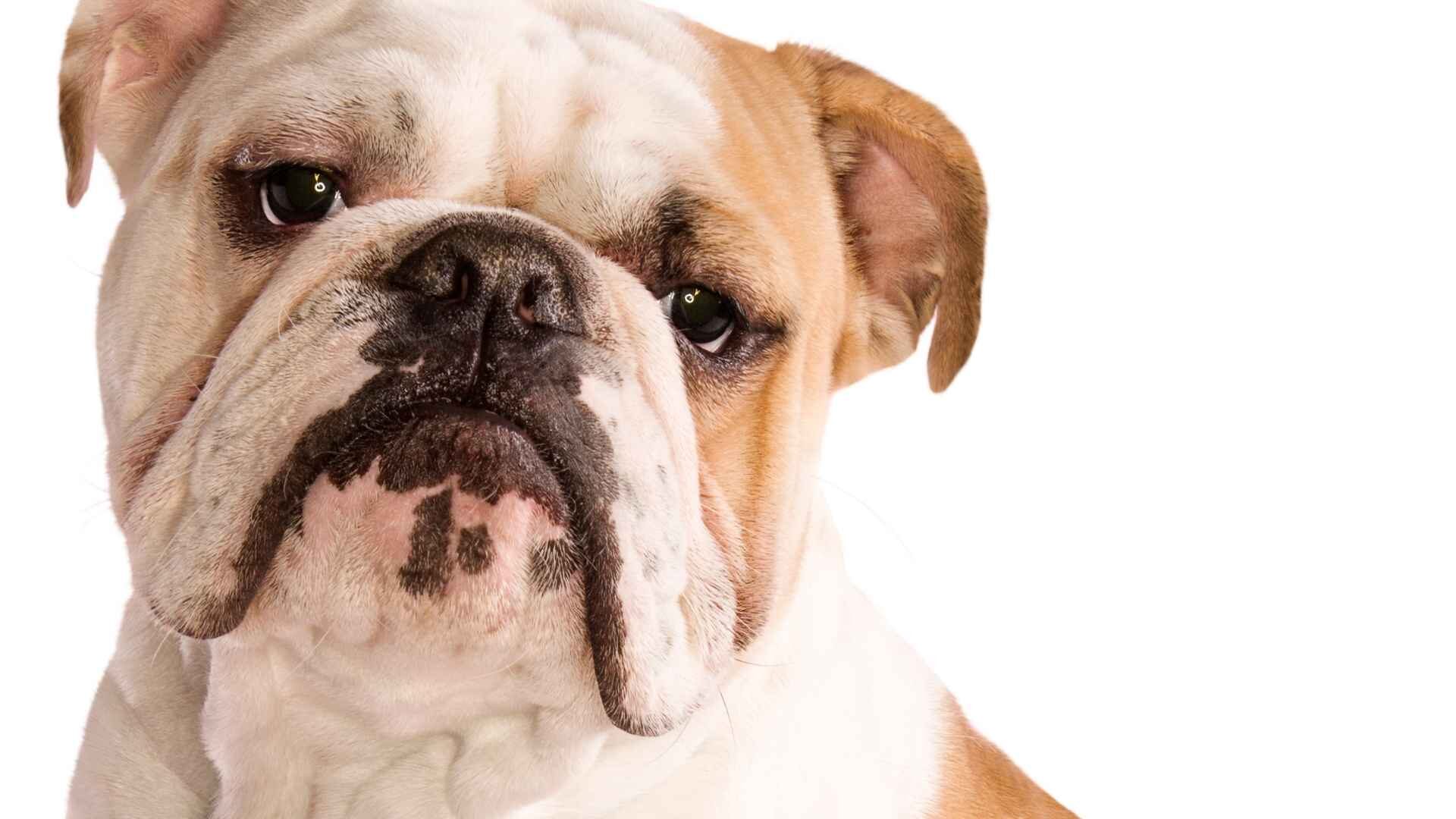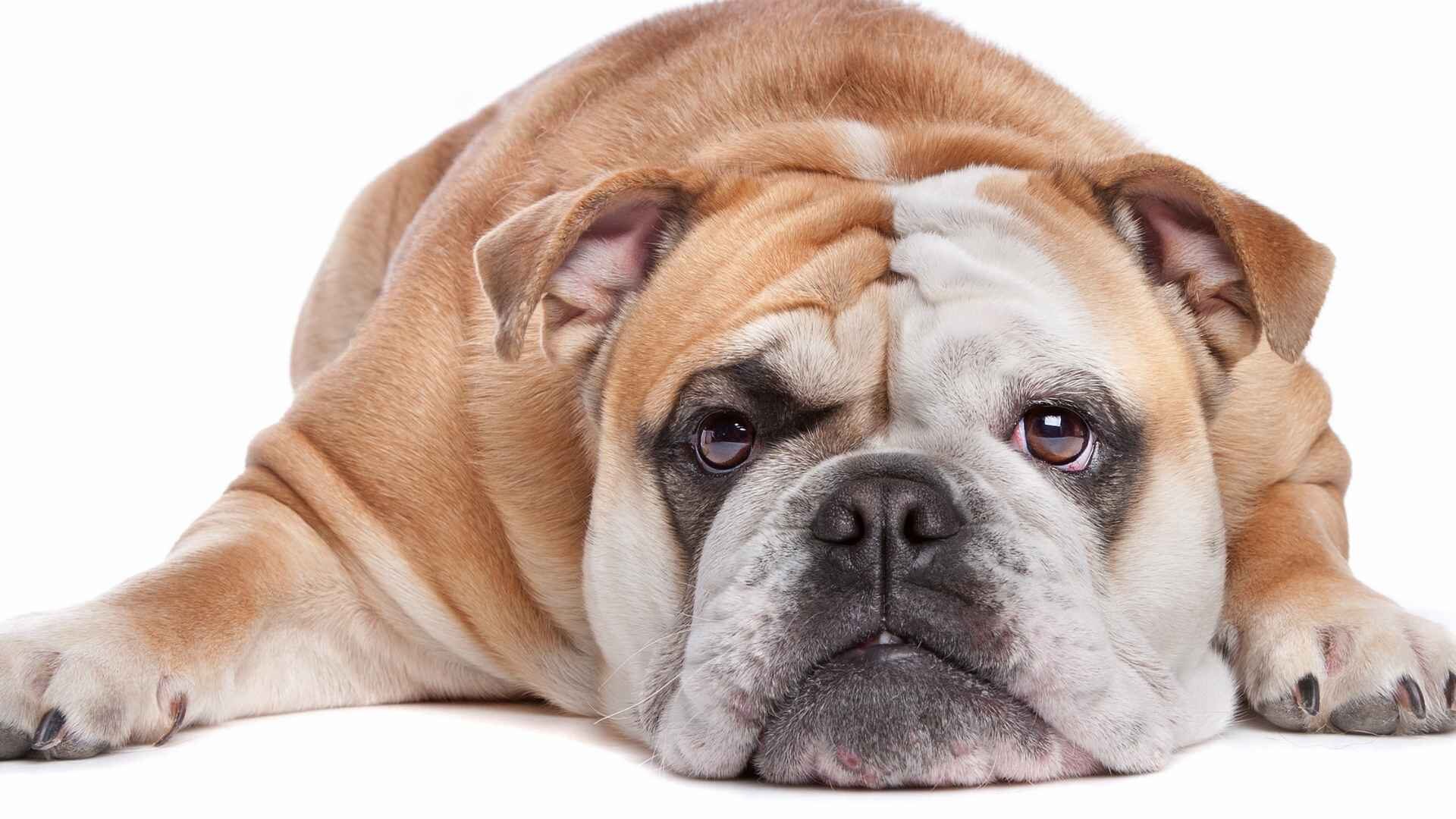Dogs, in contrast to humans, have three eyelids. When a dog produces tears, nutrients and oxygen are delivered to the eye via the nictitating membrane, the third eyelid. Commonly known as “cherry eye,” this condition is actually a protrusion of the nictitating membrane or the third eyelid.
When this happens, the gland that normally lines the inside of the eyelid shifts position, causing the area around the eye to swell and turn a bright red or pink. Unfortunately for those of us who adore Bulldogs, this is a prevalent ailment among Bulldogs.
Current research suggests that cherry eye is primarily a genetic condition; however, finding a dog pre-exposed to this issue would be next to impossible, especially if your breeder wasn’t forthcoming about whether or not the mother or father of your Bully had similar concerns.
It’s important to keep in mind that cherry eye is most common in canines between the ages of 4 months and two years. During this time, most problems will arise for the owner. Bulldogs are prone to developing cherry eyes because of a defect in their nictitating membrane, which is more common in brachycephalic breeds.
What is meant by cherry eye in English bulldogs?

A dog’s health problem could look bad from the outside, and that’s all it takes to cause a panic attack in its owner. Cherry eye is one of them, and it is very prevalent in bulldogs. Bulldogs, especially certain kinds, are notoriously prone to this. It’s a common issue with bulldog eyes.
Bulldogs, especially French Bulldogs and English Bulldogs, are susceptible to the cherry eye between the ages of one and two. If your Bulldog has cherry eye, you’ll find some helpful home remedies and information on conventional medical care on this site. But first, since bulldog eye problems are so common, let’s get to the bottom of what’s causing them, so you know what you’re doing.
Where Does the Cherry Eye in a Bulldog Come From? Then why do some dogs have cherry eyes and not others? Simply described, it’s a disorder in which the third canine eyelid prolapses or protrudes. Tears produced by the gland in the canine’s third eyelid nourish and lubricate the eye and provide necessary oxygen.
This gland produces tears while being out of sight, typically located in the tear duct’s crease. Therefore, the visible gland is what is meant by “bulldog cherry eye,” and this occurs when the tissue normally used to hide the gland is stretched, detached, or otherwise damaged, exposing the gland. Many factors, including genetic predisposition, infectious agents, and even psychological or physiological stress or trauma, can contribute to this phenomenon.
What causes bulldog cherry eye?
The name “cherry eye” accurately describes the symptom: a red, puffy bump that appears to rest on the eye. Even if it appears bad, the pet isn’t as bothered by this ailment as much as their owner is.
What, though, is the nature of this shocking disease, and how does it affect your dog? In this essay, written by a vet, we’ll take a closer look at that. In this article, we will go over the top 5 facts concerning cherry eye in dogs.
1. Cherry eye is caused by a protruding tear gland, hence the name. What, then, is a cherry eye?
Since it is usually hidden by the lower section of one’s eyelid, the swollen red gland is rarely noticed. This gland’s function is to secrete tear fluid, which serves to moisten the eye and flush out particles. In certain dogs, this gland prolapses from its normal location under the third eyelid, appearing as a red swelling.
To be more precise, the medical word for cherry eye is prolapse of the nictitans gland, and the gland in question is called the nictitans gland (PNG). For those who are unfamiliar, a third eyelid is just an extra eyelid shared by cats and dogs. Positioned at the inner canthus, it acts as a shield and a mild sweeper to keep the eye clean and clear of particles. Quite ingenious.

2. The growth or cancer in a cherry eye is not
Although a cherry eye may look dangerous, rest assured that it is not malignant. Basically, it’s just a regular tear gland that’s in the wrong spot, becoming exposed to air and so giving you that angry face.
The gland has moved, but it is still doing its duty of creating 70% of the watery part of the eyes’ nourishing tear fluid. Cherry eye is ugly, but it normally causes no discomfort to the dog. Also, it’s not harmful to the dog’s health, yet it may lead to consequences like a watery eye, corneal ulcers, or eye infection.
3. To a greater extent, this problem is seen in younger dogs
Cherry eye is a common problem in dogs under the age of two. If your dog has made it to his or her second birthday without developing cherry eye, then chances are good that Fido won’t either. This is due to the fact that some of the risk factors for developing cherry eye are inherited, increasing the likelihood that the condition will manifest in infancy. In fact, younger dogs account for 83% of cherry eye cases in canines.
4. The odds of cancer increase with certain breeds and facial features
Cherry eye is more common in some dog breeds than others. A few examples are as follows: The form of the face and the closeness of the eyelids to the eye are further factors. When a dog develops ectropion, it’s because the eyelids, especially the third eyelid, don’t fit properly. When the third eyelid, in particular, is saggy, the nictitans gland’s weight might push it even more forward, causing it to pop out of position.
5. It’s not a good idea to get rid of them surgically
Dogs often have lumps surgically removed. A few decades ago, the only therapy for a cherry eye was removal. It seemed evident at the time that getting rid of the unattractive swelling would solve the issue. When Did YOU Hear About The Recall On Pet Food? In retrospect, however, vets realize that the sole benefit was cosmetic (removing the red swelling) and that doing so can lead to difficulties down the line.
Surgery to remove the prolapsed nictitans gland is like cutting off the water supply to a leaking sink; it solves the problem in the short term but has serious consequences in the long run. So, the dripping sink isn’t a problem, but you can’t do the dishes either because there’s no running water. Thus, removal of the gland eliminates the unsightly mass but also has the potential downside of reducing tear production and thus increasing the risk of dry eye syndrome.
What are the symptoms of cherry eye?
Your dog only needs to glance at you to completely win your heart over. But then you see a red bulge in your dog’s eye corner where it wasn’t before, and your thoughts immediately turn to the worst-case scenario. There are a number of eye diseases that can affect dogs, but the cherry eye is the most common since the red bump appears on the inside corner of the eye.
Dr. Kristina Vygantas, a Diplomate of the American College of Veterinary Ophthalmologists and practicing veterinarian at NorthStar VETS, discusses cherry eye in dogs, its causes, symptoms, and possible treatments and outcomes. Dogs, in contrast to humans, have three eyelids rather than two. The nictitating membrane is a third eyelid that protects your dog’s eyes from debris and foreign bodies and is located in the lower eyelid.
It also houses a gland responsible for producing the bulk of your dog’s tears. However, in some cases, the ligament that attaches this gland to the orbital bone becomes loose or even completely separated. When this happens, a prolapse occurs, and the gland protrudes above the upper eyelid. As a result, you’ll develop a cherry eye.
While any dog is at risk for this prolapse, certain breeds and environments are more likely to develop a cherry eye. English bulldogs, cocker spaniels, and cane corsos are among the dog breeds most at risk for developing this illness in their first year of life, as noted by Vygantas. Besides these, the following dog breeds also frequently experience cherry eye.
Can cherry eye be prevented?

The third gland (eyelid) of a dog’s lower lid is prone to irritation, inflammation, and popping. That’s why it’s called a cherry eye. Cherry eye doesn’t seem to bother most dogs at first. However, it is crucial that it is treated as soon as possible. Learn more about the causes, symptoms, and treatment options available for a cherry eye here.
Dogs might acquire eye redness for a number of causes, including allergies, an eye infection, or conjunctivitis. However, cherry eye, also known as prolapse of the nictitans gland, typically manifests as a red, protruding mass in the corner of the eye.
Many dogs and cat breeds are genetically vulnerable to this disorder; Bulldogs are particularly susceptible. In this article, we’ll discuss cherry eye in Bulldogs and its causes, symptoms, and remedies. When your Bulldog is sleeping, have you ever seen his eyes appear to roll back?
Because of something called the nictitating membrane, which sits in the canine eye’s inner corner, dogs often have difficulty with dry eye. When you sleep, your upper and lower eyelids will naturally open, but since your third eyelid is closed, your eye will look like it’s completely white.
5 treatments of bulldog cherry eye
Cherry eye refers to the protrusion of the gland in the third eyelid, a condition often associated with aging. The nictitating membrane, or “third eyelid,” is an internal eyelid present in many mammalian species, including dogs. When engaging in dangerous activities like hunting or combat, the third eyelid provides an extra layer of protection for the eye.
Another important component of the eye’s protective tear film is secreted by a gland located in the third eyelid. The disorder known as “cherry eye” occurs when this gland prolapses or “pops out.” A red, bloated lump on the lower eyelid, close to the nose or muzzle, is a telltale sign of prolapse of the third eyelid gland (it takes its name from the resemblance to a cherry).
It’s possible for the “cherry eye” to be huge, covering most of the cornea, or it could be quite little, appearing only occasionally. If you notice any symptoms of “cherry eye,” don’t hesitate to contact your vet.
1. Entropion of the canine eyelid
Rolling in of the eyelids, also known as entropion, is a genetic disease present in many different types of dogs. Although some patients have a mucoid discharge, the majority of dogs will simply squint, close their eyes, and tear excessively (epiphora).
Aside from being constantly annoying to the dog, entropion can lead to other eye issues such as corneal ulcers, perforations, or the formation of pigment on the cornea, all of which can impair eyesight. Surgery can fix entropion.
2. Canine conjunctivitis
The conjunctiva is the transparent, mucous-producing membrane that lines the eyeball, the eyelids, and the tarsal membrane. Its irritation is known as conjunctivitis. In addition to redness and swelling around the eyes, drainage from the eyes and squinting or frequent blinking are all common clinical indications of conjunctivitis. Even while conjunctivitis often affects both eyes, it might sometimes just impact one.
Viruses and bacteria are the most prevalent causes of conjunctivitis, but allergies, genetic predisposition, and tumors may play a role. Finding out if the conjunctivitis is an allergic reaction or if it has spread to the sclera is the primary focus of diagnosis. To distinguish between many of these diseases, a thorough ocular examination is required. In order to treat the underlying issue, doctors may prescribe either oral or topical drugs. The prognosis for conjunctivitis in dogs is usually rather good.
3. Conjunctivitis follicular
Young puppies (less than five months old) are especially susceptible to developing follicular conjunctivitis, an eye ailment. Dust, grass, and weed pollen are common irritants that trigger episodes of follicular conjunctivitis. Conjunctival lymphoid follicles swell when they are triggered to produce antibodies by allergens or irritants.
There is a risk that these lumps will cause more eye irritation. Follicular conjunctivitis that is only mild usually does not require any medical attention. Saline rinses, topical steroids, and maybe debridement may be used to alleviate pain in a dog’s eye.
4. Treatment
In order to correct a cherry eye, surgery is usually necessary. It is common practice to use sutures to reposition a prolapsed gland (i.e., stitches). Surgical removal of the gland may be necessary if this procedure is unsuccessful. An Elizabethan collar (or cone) will need to be used on the pet after surgery to prevent it from touching its eye and loosening the stitches.
Eye ointment or drops containing antibiotics are also routinely administered to aid in healing and prevent infection. Eye drops, like artificial tears, often need to be given to the pet for the rest of its life to maintain the eye healthy and moist if surgery is not an option or if the gland is surgically removed. Leaving cherry eye untreated can lead to complications such as eye infections and keratoconjunctivitis sicca (i.e., KCS), often known as chronic dry eye.
5. Surgical
The standard treatment for a cherry eye is surgical removal. By attaching the membrane to the orbital rim or employing a pocket method, surgeons can restore the gland rather than remove it. Antibiotic eye ointment used before surgery may be required if the infection is particularly severe. In the past, gland removal was considered a therapy option since it restored a natural appearance to the eye.
Although removing the gland may improve appearances, it results in a 30% decrease in tear production. An eye’s health and safety can’t be guaranteed against the elements without the constant production of tears. Dry eye condition, also known as Keratoconjunctivitis sicca (KCS), is more common among breeds of animals with a decreased ability to produce tears. KCS is a late complication of the kind of surgery that is performed in this way.
Can you treat cherry eye at home?

As is typical, the gland of the third eyelid is attached to the lower inner rim of the eye by a fibrous connection. This attachment is known to be weak in some dog breeds, making prolapse of the gland more likely. Cocker spaniels, bulldogs, Boston terriers, beagles, bloodhounds, Lhasa Apsos, Shih Tzus, and other brachycephalic breeds are among the most susceptible (dogs with “squished” faces and short limbs). It is said that Persian and Burmese cats also suffer from “cherry eye.”
The third eyelid gland must be surgically replaced as part of the treatment. The gland in the third eyelid must be surgically replaced as part of the treatment. To prevent irreversible damage to the eye or the gland in the third eyelid, prompt treatment is essential. This is crucial because the watery (aqueous) component of the tear film is produced by the gland in the third eyelid. Your dog is more at risk for developing dry eye, which can severely impair vision if its tear production is insufficient. Your vet will talk to you about which surgical procedure is most suited for your pet.
When to see vet when your English bulldog cherry eye?
While your dog undoubtedly holds a special place in your heart, it is vital to remember that, unlike human family members, canines are unable to express discomfort when experiencing physical or emotional distress. It can be difficult to tell the difference between an injury and a dog’s sudden loss of appetite. How can you determine if your condition requires immediate attention from a medical professional?
Though I, as a seasoned vet, advise pet owners to keep an eye out for certain red flags, it’s best to discuss this with your regular vet, who is best acquainted with your pet’s individual requirements. Discover the signals indicating it’s time to take your dog to the vet: Transforming One’s Dietary Practices On hot summer days or when experiencing stress, it is not uncommon for a dog to skip a meal. But if it’s more than that, it can be a sign that your dog isn’t feeling well. If your pet goes two days without eating, it’s time to make an appointment with the vet.
Watch How to fix a bulldogs cherry eye without surgery | Video
Is there a way to gently put a cherry eye back in its socket using massage?
Can cherry eye be cured? Gently rubbing the afflicted eye in an effort to realign the prolapsed gland is reportedly effective in curing cherry eye. Sometimes the gland will normalize following a course of medicine and steroids, and sometimes it will do so on its own. However, surgical intervention is often necessary.
What is the age at which cherry eye develops in English Bulldogs?
Approximately four months to 2 years. Remember that cherry eye most commonly affects canines between the ages of 4 months and two years. Most problems that property owners face will arise during this time.
Cherry eye is a common problem in Bulldogs; what treatments are available?
The condition known as “cherry eye” requires therapy, but how is it accomplished? The third eyelid gland must be surgically removed and replaced as part of the treatment. The gland in the third eyelid must be surgically replaced as part of the treatment. To prevent irreversible damage to the eye or the gland in the third eyelid, prompt treatment is essential.
What’s the procedure for repairing a bulldog’s cherry eye?
Gentle massaging with a warm, damp towel over the protruding area of his eye can help induce tears. Drops of tears might be used as an aid as well. After applying the warm cloth for a while, gently massage the inside corner of his eye again to get the gland to relax and return to its proper location.
Is there any way to stop cherry eye?
There is no method to prevent cherry eye because it is caused by genetically weak tissue. However, with treatment, the gland typically returns to normal function within a few weeks of operation.
Conclusion
Is there a red bump in your dog’s eye-corner? Cherry eye, a condition caused by a protrusion of the tear gland of the third eyelid, could be the cause of your dog’s symptoms. Learn the telltale indications of cherry eye in dogs so you can get the treatment quickly.
Your dog only needs to glance at you to completely win your heart over. But then you see a red bulge in your dog’s eye corner where it wasn’t before, and your thoughts immediately turn to the worst-case scenario. There are a number of eye diseases that can affect dogs, but the cherry eye is the most common since the red bump appears on the inside corner of the eye.
Dr. Kristina Vygantas, a Diplomate of the American College of Veterinary Ophthalmologists and practicing veterinarian at NorthStar VETS, discusses cherry eye in dogs, its causes, symptoms, and possible treatments and outcomes.
Bottom up
Please comment below about your ideas and share this “What Is English Bulldog Cherry Eye: Causes with Treatments” article with your friends.
Stay tuned with our website to find out more exciting stuff. Don’t forget to check out our previous articles too.
Until the, Read about, Why Is My French Bulldog Doesn’t Chew His Food: Guide to Do




